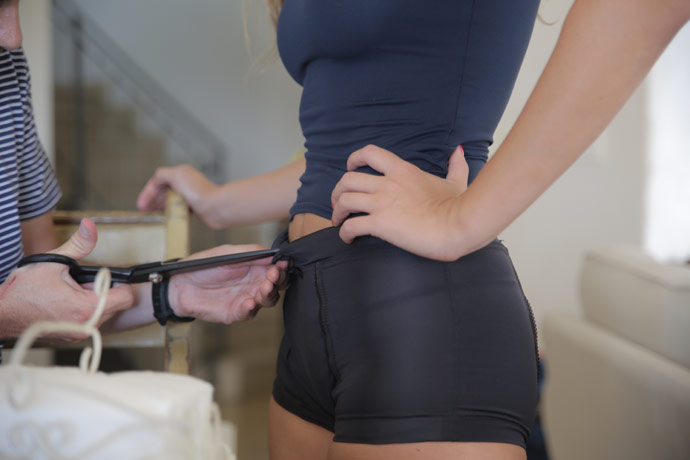This Company Has Created Anti-Rape Shorts, And People Don’t Like It
Rape continues to be a huge issue in the United States and around the world. According to the U.S. Department of Justice’s National Crime Victimization Survey, there is an average of 237,868 victims (age 12 or older) of rape and sexual assaults each year, equating to about 1 sexual assault every 133 seconds.
Although the number of sexual assaults has seen some decrease over the past few years, AR Wear, a line of anti-rape shorts, is determined to keep the statistics dwindling.
AR Wear is gaining more and more traction with its campaign on IndieGogo. As of now, AR Wear is halfway to its goal of $50,000. Its slogan is, “Confidence and protection can be worn.”
We learned that resistance increases the chance of avoiding a completed rape without making the victim more likely to be physically injured,” the campaign reads. “We concluded that an item of clothing that creates an effective barrier layer can allow women and girls to passively resist an attacker, in addition to any other form of resistance they may be able to carry out at the time of an assault.”
The garment was designed to be worn comfortably while still resuming normal day-to-day activities. AR Wear’s video shows a young woman wearing her sleek, fitted AR Wear shorts under a slimming black dress and headed for a night out.
The key to the anti-rape shorts is the design. Although the founder could not find a specific material that was key in preventing rape, the team managed to create a skeletal structure on the bottoms that kept them soft and ergonomic and featured cut resistant straps and webbing. The waists and thigh straps are to be adjusted by the wearer and, consequently, can only be undone by the wearer. For example, the waist strap has a special, small lock that looks like a button, and the wearer must use easy hand-lock combinations (there are 132 combinations) to undo the strap.
Once AR Wear receives its initial funding, it will be able to continue expanding the line to include travel and running pants.
What seems to be a noble cause isn’t getting the reaction one would think. In fact, AR Wear has probably received as much criticism as it has praise.
Giving society one more reason to blame rape victims for their rape is not empowering,” blogger Anne Thériault wrote in a post. “Continuing to embrace the idea that rape has something to do with what kind of clothing you are wearing (or not wearing) is not empowering… There is no actual way for a woman to prevent being raped.”
Another blogger agreed, saying, “…anti-rape clothing is just another way of victim blaming women for getting raped rather than dealing with the epidemic of male violence in our culture. It’s nothing more than a new-fangled chastity belt.”
And there are countless others that say the anti-rape shorts do nothing but veer away from the issue that men shouldn’t be raping at all, and focusing more on woman protecting themselves, as if it is the woman (or man’s) responsibility to prevent it from happening.
I think what the founders are trying to do here is still a noble case, despite the criticism. To say that women (or anyone, for that matter) shouldn’t wear anti-rape shorts because men shouldn’t rape is the same thing as saying people shouldn’t take self-defense classes because people shouldn’t be physically assaulting them. There’s nothing wrong with wanting to be safe, nor is there anything wrong with two people aiming to create a method for another person to feel more safe when they’re out.
Some have argued that a pair of shorts that cannot be taken off will only make it worse, enraging the rapist and leading to more heavy physical violence. Meaning what? It’s better to just get raped because having clothes that are hard to take off will just make the rapist mad?
Personally, I don’t think any harm can be done from having a pair of anti-rape shorts. At the end of the days, regardless of the fact that the rapist is to blame, and not the victim, it still shouldn’t prevent the potential victim from wanting to protect him or herself from being a vulnerable position. The statistics speak for themselves.










































